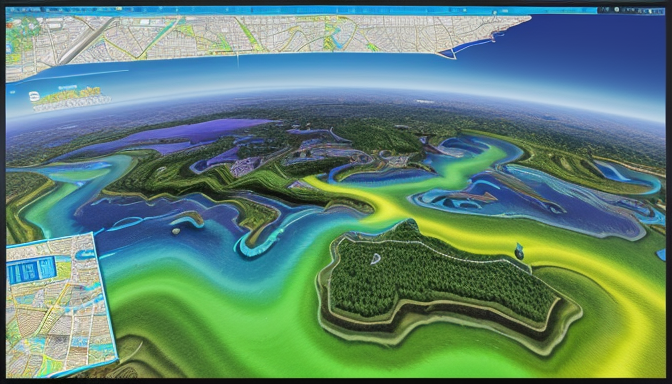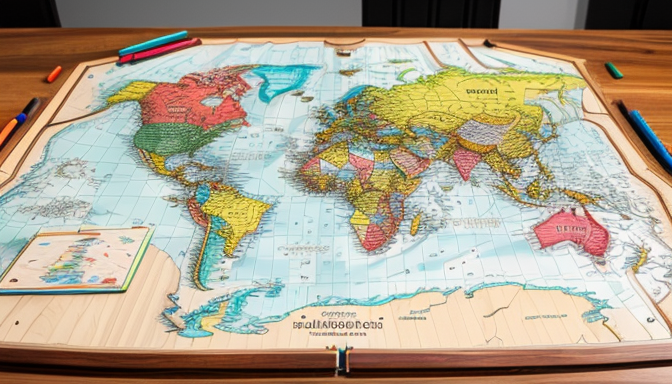Creating a captivating map is like crafting a story; it weaves together geography, politics, mythology, and culture into a visual tapestry that invites exploration. Whether you’re designing a map for a fictional universe or a real-world locale, the process involves a delicate balance of artistry and science. Imagine your map as a gateway—the first glimpse into a world brimming with adventure and intrigue. The colors you choose, the symbols you use, and the layout all play a crucial role in how your audience engages with the information.
To start, consider the geographical elements of your world. Are there towering mountains, vast oceans, or sprawling cities? Each feature should be thoughtfully placed and accurately represented to create a sense of realism. Next, think about the political landscape. Who rules these lands? What alliances or conflicts shape the interactions between different regions? This not only adds depth but also enriches the narrative that your map conveys.
Finally, don’t forget to sprinkle in some mythology and culture. Legends can be illustrated through unique symbols or landmarks that capture the essence of your world’s history. By incorporating these elements, you create a map that is not just a tool for navigation but a vivid experience that breathes life into your narrative.
The Importance of Aesthetic Design
When you think about maps, what comes to mind? Is it just lines and dots on paper? Or is it a vivid representation of places waiting to be explored? The truth is, a well-designed map does so much more than just convey information; it captivates the viewer’s attention and sparks curiosity. Imagine walking into a gallery filled with stunning artwork—each piece tells a story, much like a map does. Aesthetic design plays a crucial role in this storytelling process.
The visual elements of a map, such as color schemes, textures, and typography, can significantly influence how users interact with it. A map that is visually appealing not only attracts the eye but also enhances comprehension. For instance, using contrasting colors can help distinguish between different terrains or political boundaries, making it easier for users to navigate through information.
Furthermore, aesthetic design can evoke emotions and create a sense of place. Think about the difference between a plain, monochrome map and one that bursts with color and artistic flair. The latter invites you to dive deeper into the details, while the former might leave you feeling indifferent. This emotional connection is vital, especially when designing maps for fictional universes.
To illustrate this point, consider the following aspects of aesthetic design that can transform a map into a work of art:
- Color Palette: Choose colors that resonate with the theme of your universe.
- Typography: Use fonts that reflect the culture or era you’re depicting.
- Textures: Incorporate textures to add depth and dimension.
In conclusion, the importance of aesthetic design in map-making cannot be overstated. By combining art with information, you create maps that not only inform but also inspire, inviting users to embark on their own adventures through the landscapes you’ve crafted.

Innovative Technologies in Mapping
Mapping has come a long way from the dusty atlases of yesteryear. Today, innovative technologies are revolutionizing the way we perceive and interact with geographical data. Imagine being able to explore a fictional universe with the same detail as our own world! With tools like Geographic Information Systems (GIS) and advanced 3D modeling software, creators can craft immersive landscapes that are rich in geography, politics, mythology, and culture.
One of the most exciting advancements is the use of Augmented Reality (AR) in mapping. By overlaying digital information onto the physical world, AR allows users to experience maps in a whole new dimension. Picture this: you’re walking through a park, and your smartphone reveals hidden trails, historical facts, and even fictional lore about the area. It’s like stepping into a video game!
Another game-changer is the rise of interactive web maps. These maps allow users to engage with data dynamically, making it easier to understand complex information. For example, a map detailing the political landscape of a fictional universe can be clicked to reveal details about each region’s governance, culture, and history. This level of interactivity not only enhances user engagement but also transforms learning into a fun adventure.
In conclusion, as technology advances, the possibilities for map-making are endless. From AR to interactive web solutions, the tools at our disposal empower us to create not just maps, but entire worlds waiting to be explored. So, why not dive into this exciting realm and start crafting your own unique universe?
Frequently Asked Questions
- What makes a map visually appealing?
A visually appealing map combines color, typography, and layout effectively. Think of it like a painting—each element works together to draw the eye and tell a story. The right balance between aesthetics and functionality can transform a simple map into a captivating visual experience.
- How has technology changed map design?
Technology has revolutionized map design by introducing tools that allow for interactive and dynamic elements. Imagine being able to zoom in, click for more information, or even view real-time data! These advancements not only enhance user engagement but also make geographical information much more accessible.
- Can anyone create a map?
Absolutely! With the right tools and a bit of creativity, anyone can create a map. Whether you’re a professional designer or just someone with a passion for geography, there are user-friendly software options available that cater to all skill levels.
- Why is storytelling important in map design?
Storytelling in map design adds depth and context. It’s like giving your map a personality! By weaving narratives into the design, you not only inform but also engage your audience, making the experience memorable and meaningful.

Recent Comments